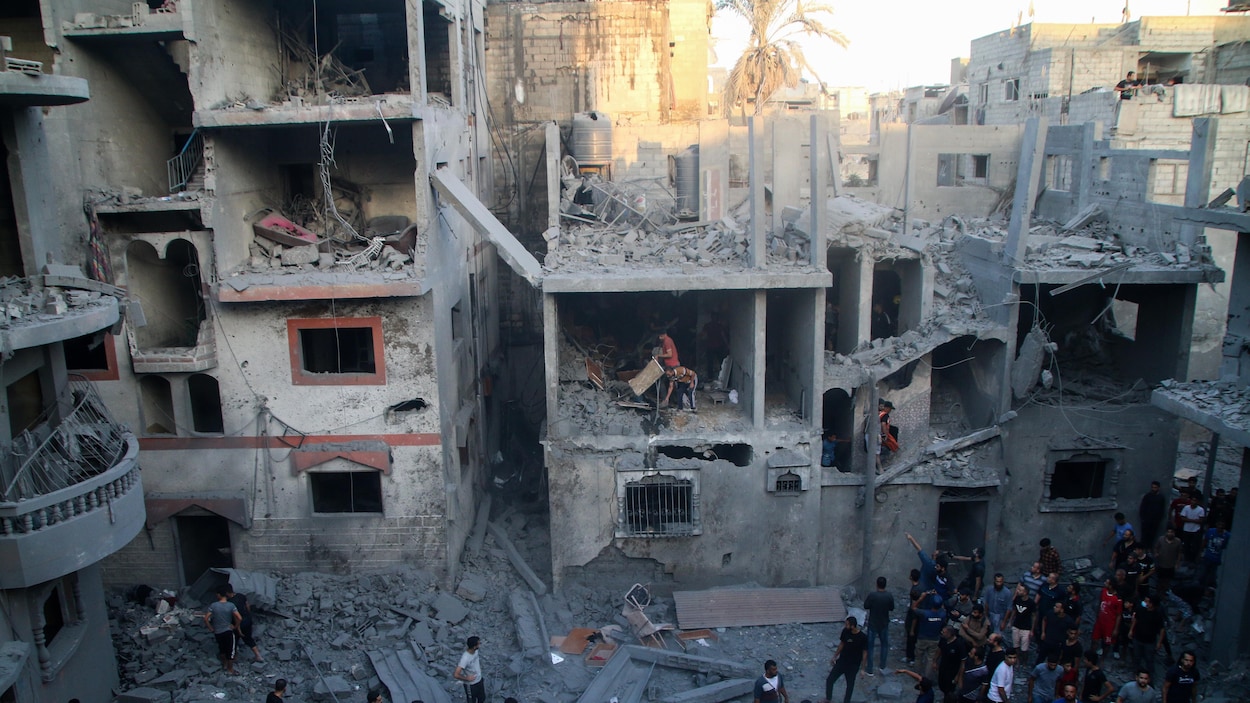Since October 7, Israel has been waging a bitter campaign of air strikes on the Gaza Strip. Satellite images compiled by American researchers show the extent of the damage even before the announced ground offensive began.
Israel says it is targeting leaders and fighters. But satellite images show that places of worship, hospitals, schools and houses were also damaged or destroyed.
Corey Scher of the CUNY Graduate Center in New York and Jamon Van Den Hoek of Oregon State University compared images from the Sentinel-1 satellite of the European Space Agency’s Copernicus program to detect changes on the ground since the start of the war.
Their data, albeit preliminary, confirm what humanitarian organizations are already reporting on the ground: the damage in the Gaza Strip is extensive.
The northern Gaza Strip was hit particularly hard. Satellite images show that large areas of Beit Hanoun, near the border with Israel, were damaged. Several mosques were hit in Beit Lahya.
The World Health Organization has recorded 59 attacks on health facilities, including 17 hospitals. Four hospitals in northern Gaza (Beit Hanoun, Hamad Rehabilitation, Al Karama and Ad Dura) had to be evacuated and are no longer operational.
On Friday, the Palestinian Ministry of Health said seven hospitals and 21 primary health centers were out of service; Sixty-four medical workers were reportedly killed.
The images also show that buildings in the Shati (beach camp) and Jabaliya refugee camps, which housed more than 200,000 people before the start of the war, were hit by strikes.
In Gaza City, satellite images show further damage in the Zeitoun district, which was badly damaged in the 2008 war.
While most Israeli airstrikes have focused on northern Gaza, the southern areas have not been spared. Thousands of people have sought refuge in these places to escape hostilities in northern Gaza.
Separately, the Gaza Ministry of Public Works reported to the United Nations (New window) that 8,840 houses were destroyed in the Gaza Strip. In addition, around 5,434 houses were rendered uninhabitable; Another 83,750 houses suffered light to moderate damage. This would represent about 25% of all residential real estate in the Gaza Strip. The UN says this number is underestimated.
According to the latest count by the United Nations Relief and Works Agency for Palestine Refugees in the Middle East (New window)The strikes affected 170 educational institutions, two of which were used as emergency shelters for displaced people. A university building and seven churches were damaged and at least eleven mosques were destroyed.
At least six water wells, three water pumping stations, a water reservoir and a desalination plant that serves more than a million people were also damaged.
Already thousands dead
According to the latest report from the Israeli and Palestinian authorities, there are more than 5,000 deaths – 4,137 on the Palestinian side and 1,400 on the Israeli side.
In addition, according to the United Nations Office for the Coordination of Humanitarian Affairs (New window)12,500 Palestinians and 4,500 Israelis were injured.

Award-winning entrepreneur. Baconaholic. Food advocate. Wannabe beer maven. Twitter ninja.






